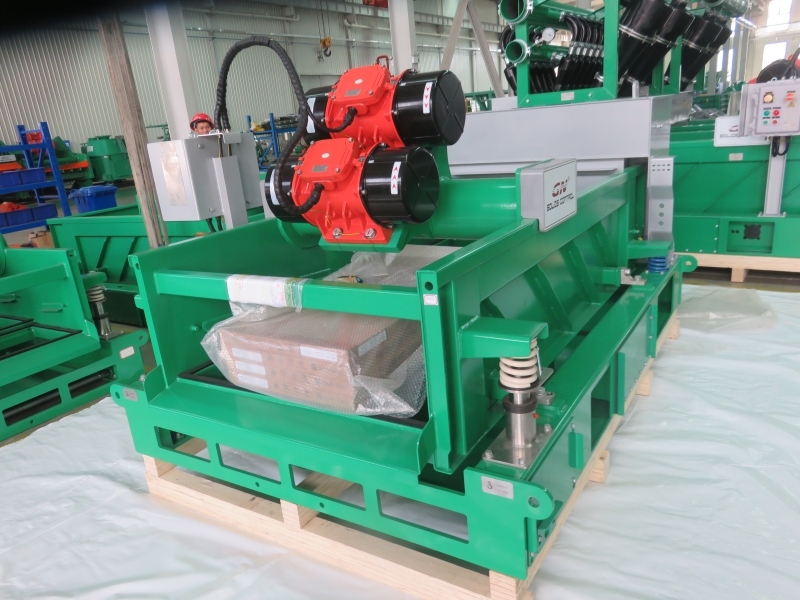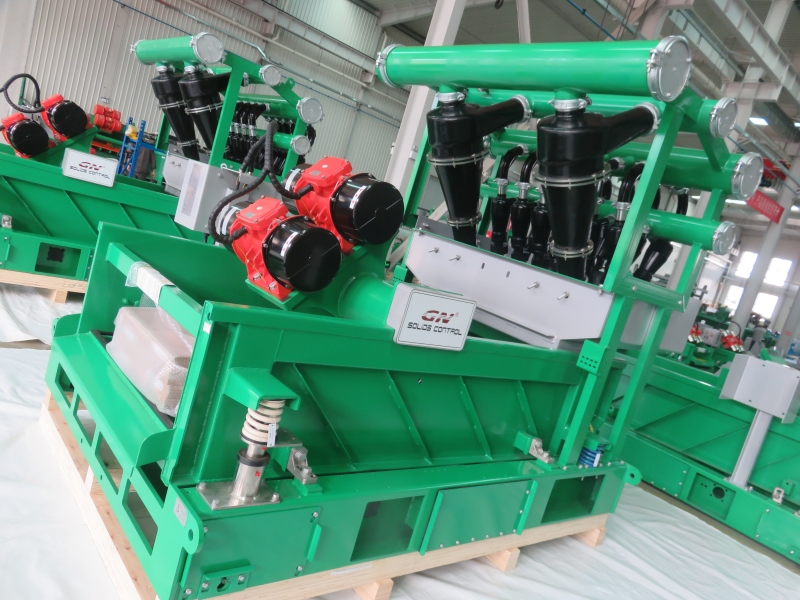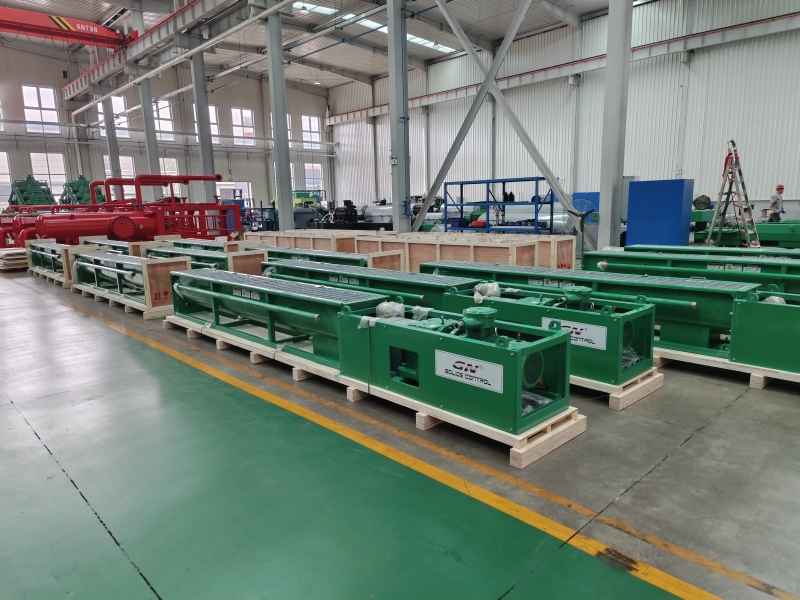


GN is a well-known brand from China, its full company name is HeiBei GN Solids Control Co.,Ltd which locadted in No.3 Industry Road, Dachang Chaobai River Development Area,Langfang, China; We are known around the world for unique innovation without compromise, sophistication while maintaining user simplicity, and superb service to our extremely wide customer base.specializing in supplying solids control& waste management equipment to the global market.
In the oil and gas industry, shale shakers are crucial for managing drilling fluids during the drilling process. Here’s a more detailed look at their role:
Function
- Separation of Solids: Shale shakers separate drill cuttings (solid rock and sediment) from the drilling mud. This is important to keep the mud clean and effective.
- Fluid Recovery: The recovered drilling fluid can be reused, which is cost-effective and environmentally friendly.
Design
- Vibrating Screens: Shale shakers typically have one or more layers of screens that vibrate to facilitate the separation process. The screen size can be adjusted based on the type of drilling and the expected size of cuttings.
- Linear Motion vs. Elliptical Motion: Shale shakers can use different motion types, with linear motion being common for better solids control.
Types
- Dual- and Triple-Deck Shakers: These have multiple screens stacked on top of each other for more effective separation.
- Mud Cleaners: Some shale shakers are combined with hydrocyclones or centrifuges for enhanced fluid cleaning.
Importance
- Efficiency: By maintaining the quality of drilling fluid, shale shakers improve drilling efficiency and reduce downtime.
- Cost Savings: Effective solids control minimizes the need for new drilling fluid and reduces disposal costs for waste.
Applications
- Onshore and Offshore Drilling: Shale shakers are used in various drilling operations, including exploration and production.
- Well Maintenance: They are also used during workovers and well maintenance activities to manage fluids.
A mud cleaner is an essential piece of equipment in the oil and gas industry, specifically designed to enhance the management and purification of drilling fluids. Here’s a closer look at its functions, components, and importance:
Function
- Solid Removal: Mud cleaners effectively remove fine solids from the drilling mud, improving its quality and performance.
- Fluid Recovery: Like shale shakers, mud cleaners help recover valuable drilling fluids for reuse, thus minimizing waste.
Components
- Shale Shaker: Most mud cleaners incorporate a shale shaker as the first stage for coarse solid separation.
- Hydrocyclones: These are used for separating finer particles. They operate by using centrifugal force to push solids outward while allowing the cleaner fluid to flow upward.
- Desander and Desilter: These components work alongside hydrocyclones to further remove sand and silt-sized particles. Desanders target larger solids, while desilters focus on smaller ones.
Types
- Standalone Mud Cleaners: These operate independently and can be customized based on specific drilling needs.
- Integrated Systems: Some mud cleaners are integrated with other equipment, such as centrifuges, for a comprehensive solids control solution.
Importance
- Enhanced Drilling Performance: By effectively removing solids, mud cleaners help maintain the viscosity and density of the drilling fluid, which is crucial for efficient drilling.
- Cost Efficiency: By recovering and reusing drilling fluid, mud cleaners reduce the need for new materials and lower disposal costs.
- Environmental Compliance: Efficient solids removal helps meet environmental regulations and reduce the ecological impact of drilling operations.
Applications
- Onshore and Offshore Operations: Mud cleaners are used in various drilling environments, including exploratory drilling and production wells.
- Well Maintenance: They are also employed during well interventions to manage and recycle fluids effectively.
A screw conveyor is a mechanical device used to transport bulk materials, typically in a horizontal or slightly inclined orientation. It consists of a helical screw blade (or auger) that rotates within a tubular or trough-like casing. Here are some key points about screw conveyors:
Function
- Material Transport: They efficiently move materials such as grains, powders, or aggregates from one location to another.
- Mixing and Feeding: They can also mix materials or feed them into processing equipment.
Design
- Screw Blade: The shape and pitch of the screw blade can be customized based on the material and required flow rate.
- Casing: The casing can be designed for different lengths and inclinations, accommodating various material handling needs.
Advantages
- Versatility: Screw conveyors can handle a wide range of materials, including dry, wet, or sticky substances.
- Space Efficiency: They require relatively little space compared to other material handling systems.
- Continuous Operation: They can operate continuously, making them ideal for bulk material handling processes.
Applications
- Agriculture: Commonly used for grain handling and feed processing.
- Construction: Used for moving sand, gravel, or concrete in construction sites.
- Food Processing: Employed in transporting ingredients and products in food manufacturing.
For our equipment brochure or more info, never hesitate to find the contact info below to have a prompt reply.
MichaelSong
Sales manager
Whatsapp:+86 17801799913
E: michael@gnsolidscontrol.co/michael@gnsolidscontrol.com